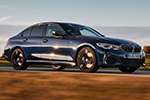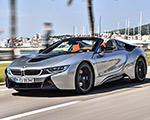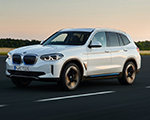The COVID-19 pandemic changed a lot of things. In BMW’s case, it irreversibly impacted how it — and its associated brands — went about selling cars. It wasn’t all on the supply side, either. The pandemic also shaped how people sought out their new rides. Mind you, none of it was easy, due at least part to constant changes in U.S. state-specified regulations. With a wide range of different regulations and approaches to mitigating the pandemic, BMW had to stay flexible.
How BMW Adapted: Shutdowns, Flexibility, and a New Way of Selling Cars
As the pandemic ramped up, so did closures to BMW facilities. The Spartanburg, South Carolina plant closed between March 29th and May 4th, 2020. But it wasn’t just a health precaution; BMW claims it was a response to supply-chain issues, which would continue to haunt the brand throughout the pandemic years, as well as a sharp drop-off in demand. But, the downtime was spent wisely. BMW implemented new social distancing and sanitation requirements, and took the opportunity to perform maintenance and repairs as needed. A shorter break occurred at the Performance Center, which similarly used the time to install protective equipment and sanitation stations. Thermal, or BMW Performance Center West, in California, would remain closed until late in the year.
These were far from the only shifts occurring across the brand, though. Remote work became the norm at BMW North America, with less than 60 percent of the staff at BMW HQ in Woodcliff Lake, New Jersey, in-person at any given time. Jersey “had ups and downs,” says Sebastian Mackensen, then BMW NA President and CEO. “We opened the office and had to close it down again, and then we had to decide to bring everyone back.” Changes throughout the building reflected its more “part-time” usage, with more common areas and co-working spaces. More importantly, it shaped how customers bought cars. Reportedly twice as many customers as usual ordered specific vehicles as opposed to simply buying something from dealer inventory. This further led to a smaller on-hand inventory nationally, reducing expenses everywhere in the supply chain.
MINI’s Digital Leap: How “MINI Anywhere” Redefined Online Car Buying
By and large, the most serious changes to MINI came by way of “digital retailing,” or essentially how car shoppers could buy a car online. While many other brands already offered a fairly uniform way to do so, the in-era leadership team at MINI felt the brand was far behind. The result was an innovation: MINI Anywhere. “We built a tool called MINI Anywhere that was beautiful, clean, and kind of audacious, because we were the smallest car company in the country and we had a bespoke digital retail solution which J.D. Power ranked as one of the best in the industry for four consecutive years,” says then Head of Marketing and Product Patrick McKenna.
Despite all the challenges of the COVID-19 pandemic, BMW and MINI proved resilient. In Q3 2020, the brand measured a 16.2 percent and 11.9 percent decline in USA sales year-over-year, respectively. Compared to the 39.3 percent sales decline measured in the preceding quarter, Q3 was a measured success. By 2021, BMW had recouped any ground it lost in the year preceding. The brand moved 336,644 cars; just 1,359 fewer than annual sales in 2019. By 2023, BMW was back to breaking annual records.
Source: BMW USA







































































